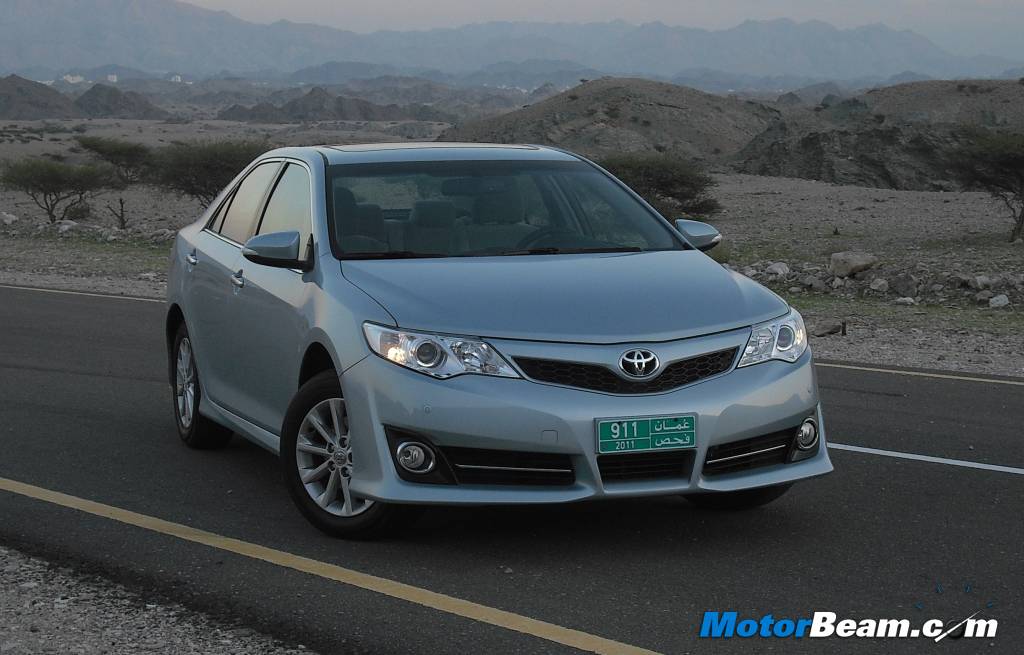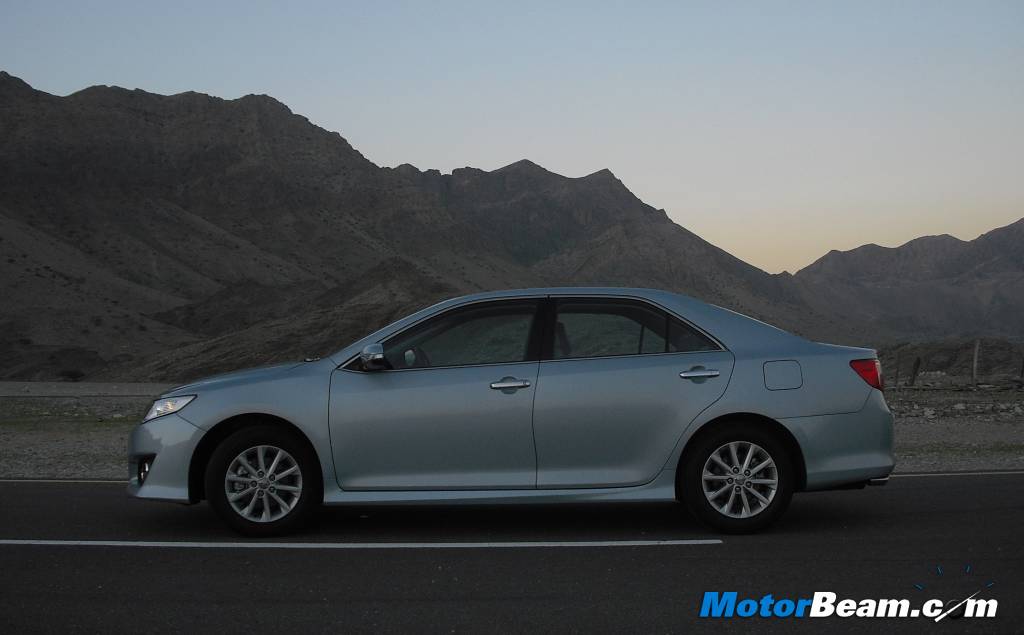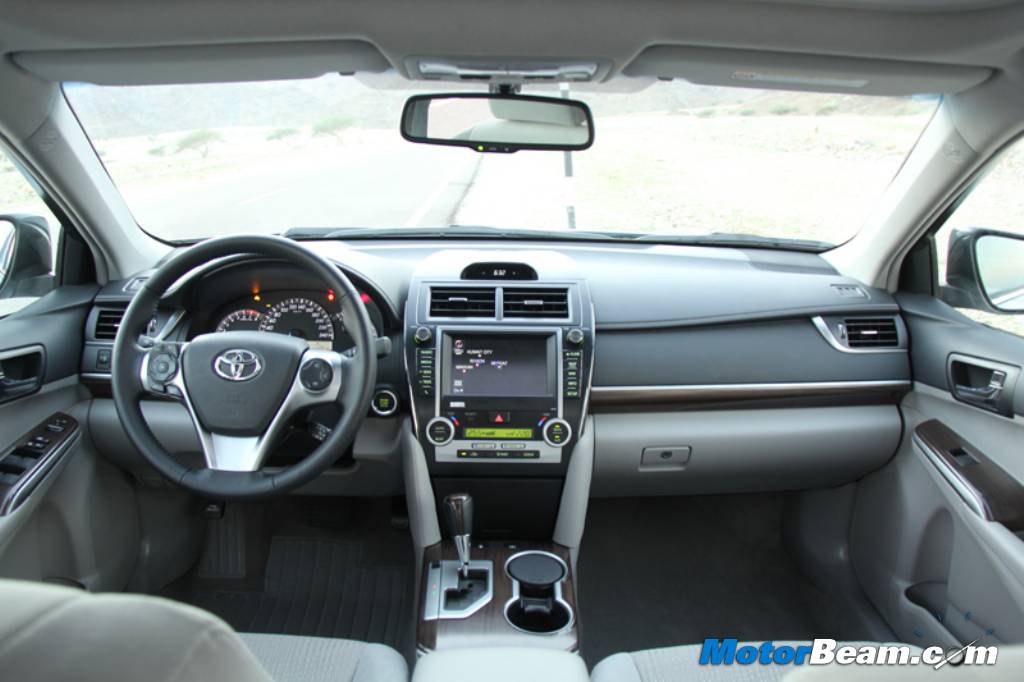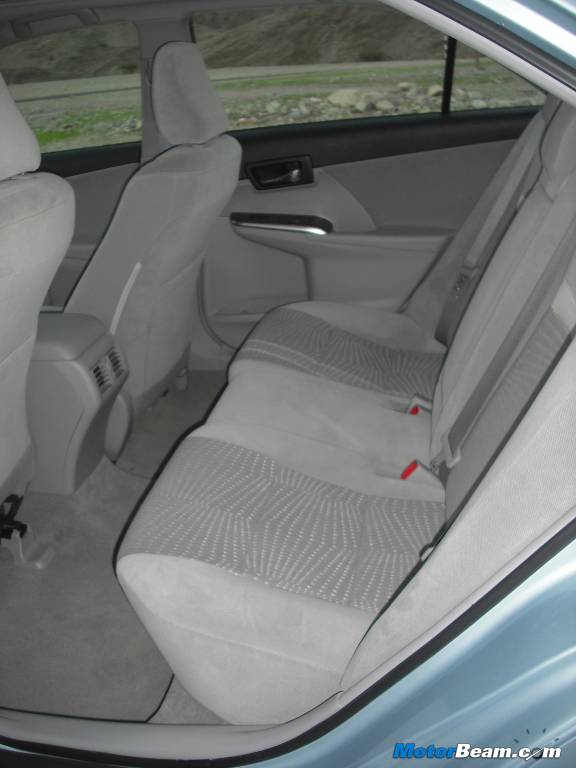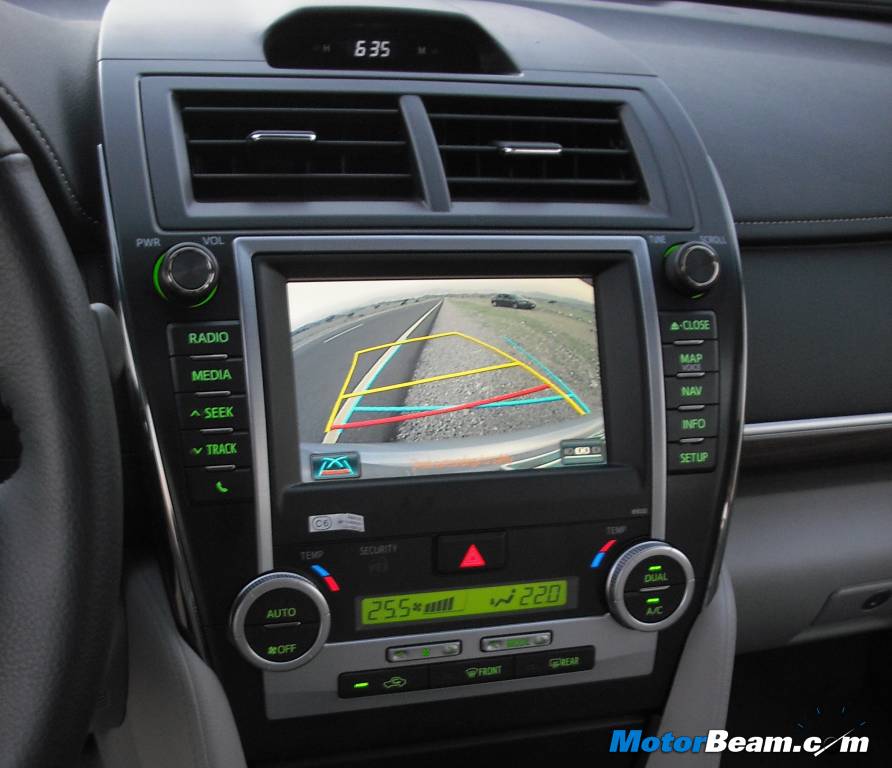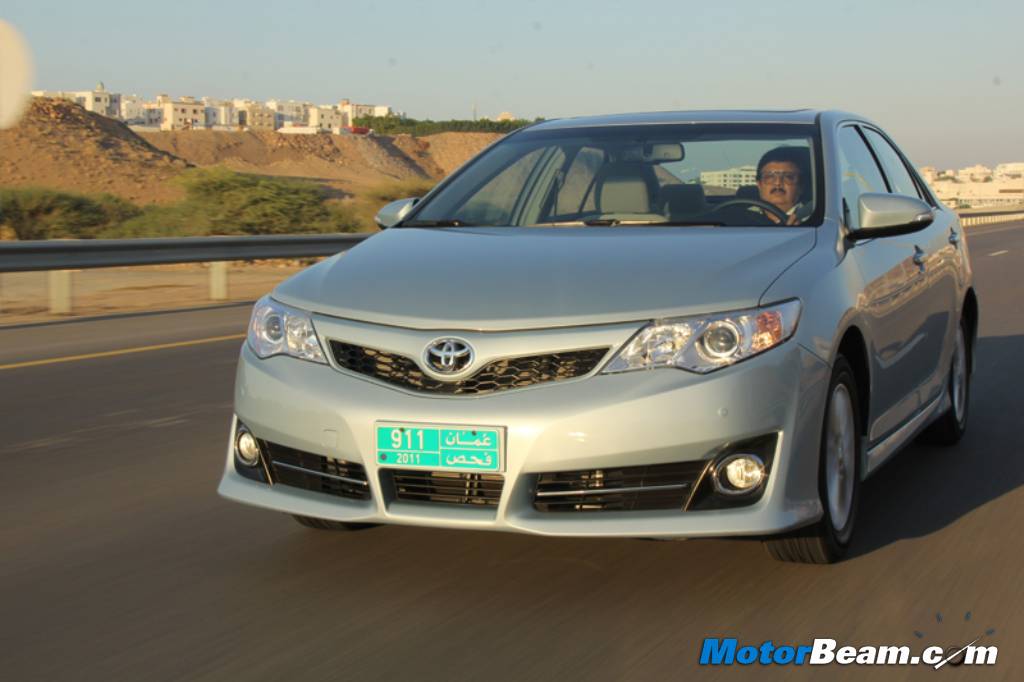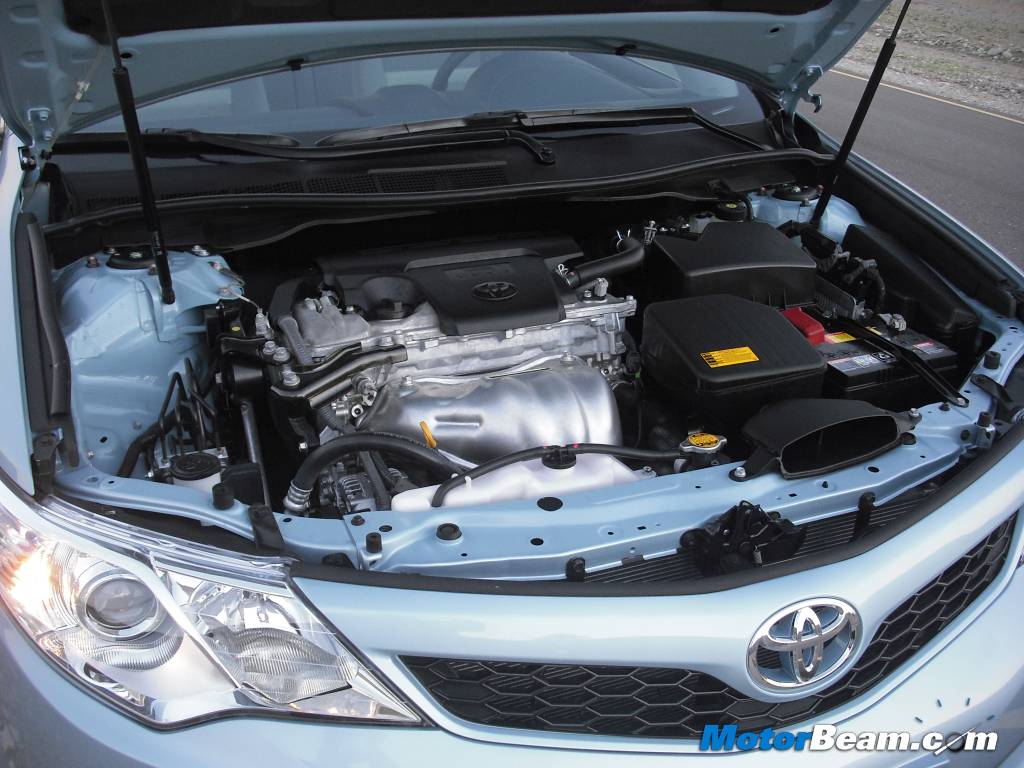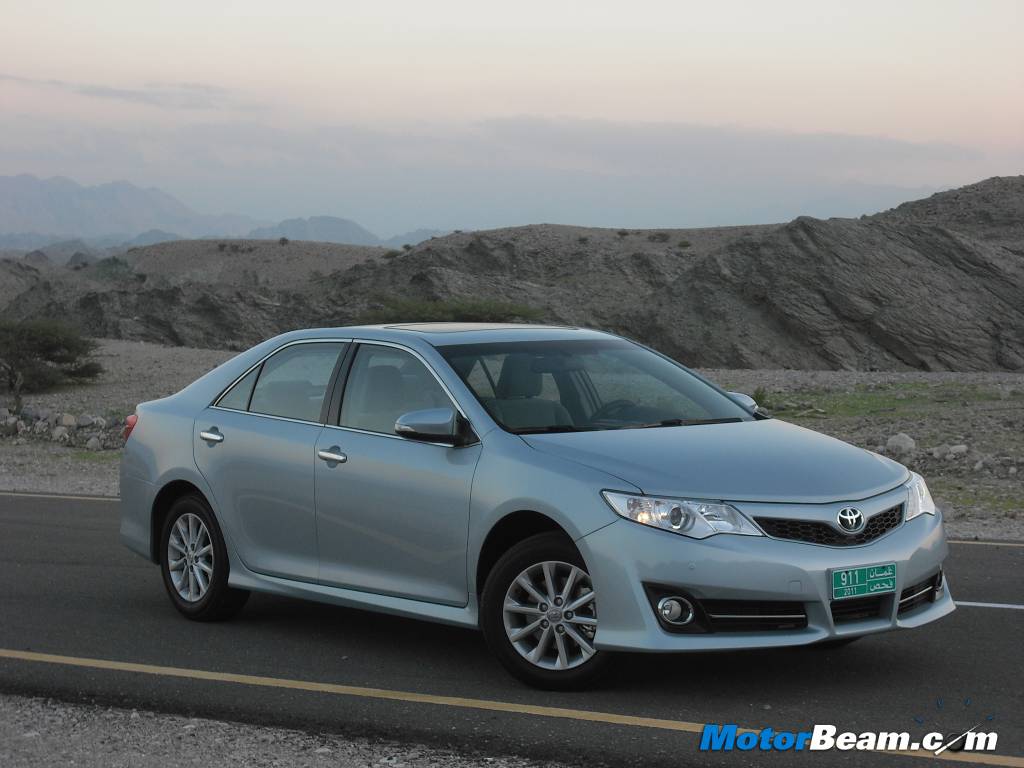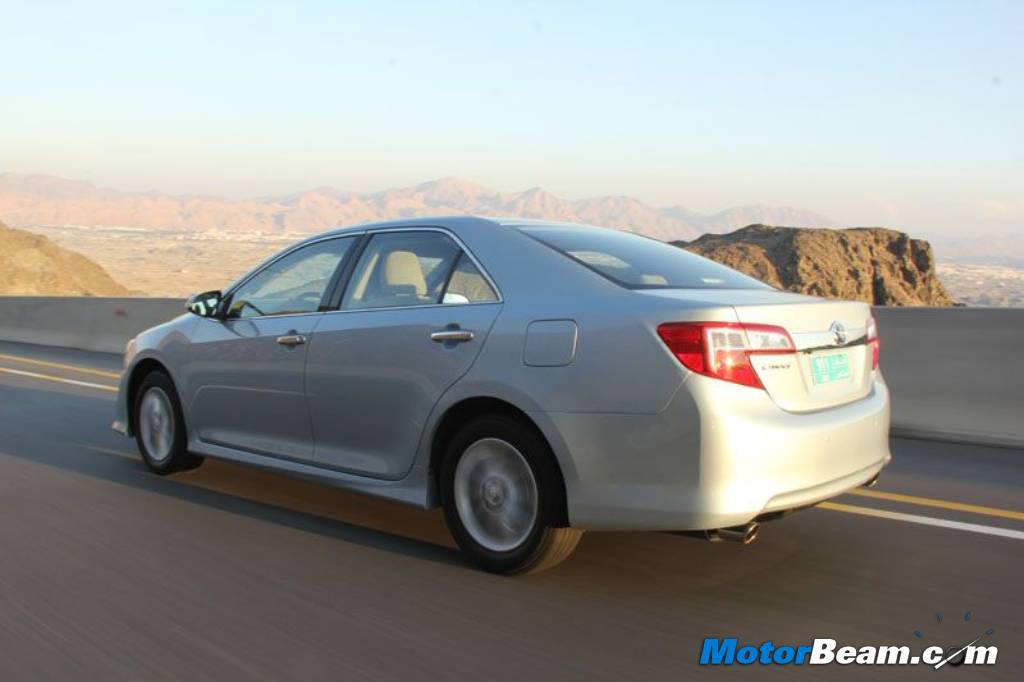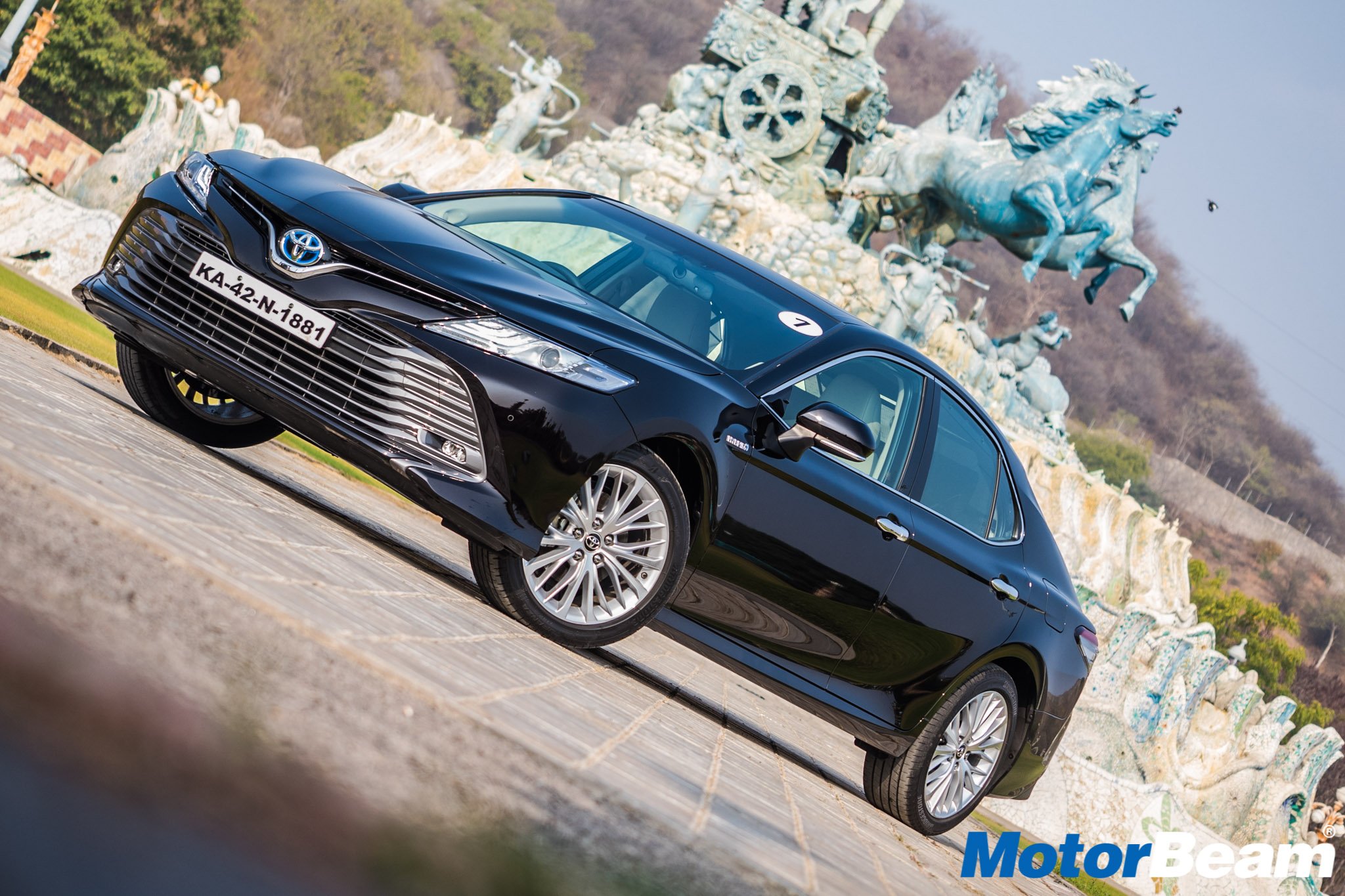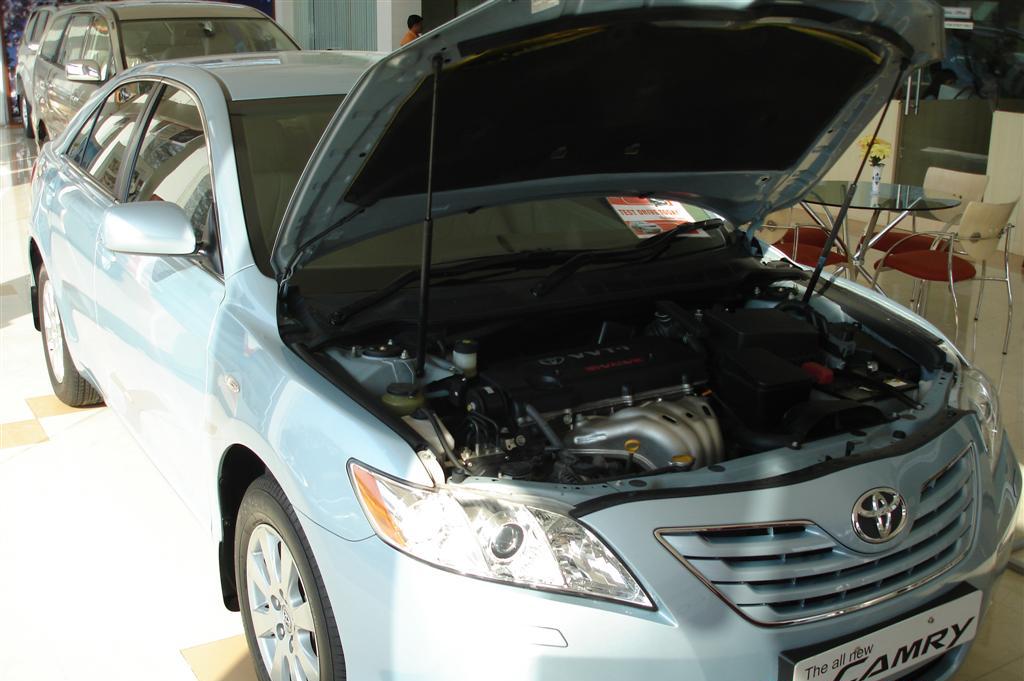Evolution or revolution? It’s actually both for the all-new seventh generation 2012 Toyota Camry. The new arrival enters an extremely busy and fast growing segment with a host of upgrades. MotorBeam tested the car in Oman a few weeks before its India debut to find out how good it is.
Author: Chandan B Mallik; Photography: Raj Warrior
Toyota will be launching the all new Camry at the 2012 Auto Expo. The Japanese automaker has sold 15 million units of the Camry across 100 countries till date. However India does not account for even 1% of those 15 million. The reason for this can be several, from the high price to the lack of a diesel heart. But Toyota now plans to price the new Camry aggressively by opting for local assembly. This will save them a large chunk of import duties which they have been paying (and happily passing on to customers) for the outgoing model.
Exteriors – From the outside, the Camry looks alot like the model it replaces. But don’t be fooled by the lack of changes to the exteriors as the seventh generation model is completely re-engineered. The dimensions are almost identical to the outgoing model (XV40) as Toyota engineers chose to carry forward the styling. The 2012 Camry looks slightly sharper though, thanks to the slightly re-skinned front and rear. The Japanese automaker claims to have utilized it’s experience of Formula 1 Racing in the new Camry. Case in point is the flat floor and slippery body of the new model. The 2012 Toyota Camry is the most slippery car in its segment, having a Cd of just 0.27. This low drag co-efficient even beats some sports cars like the 997 Porsche 911 (Cd of 0.28) The rear is very German and Toyota calls this new design language ‘rational tech-dynamism.’
Interiors – Step inside and the first thing you notice is that the wave of plastic, uninspired central console and thin rimmed steering wheel are all gone. An all new dashboard sporting new and additional analogue and digital instrumentation, complementary textures and a thick walled steering wheel greet you. Features such as Bluetooth, six-speaker CD sound system with auxiliary input and USB jacks, 60:40-split fold-down rear seat, ABS with brake assist, stability control, front and rear-seat side airbags, full-length side curtain airbags, and knee airbags for both driver and passenger as standard. Even though the dimensions of the Camry have not grown, the headroom, legroom and shoulder room have all improved marginally.
The roofline of the 2012 Camry has been revised and made flatter. The A-pillar has been narrowed while the C-pillar has been modified. This improves rear seat headroom by 0.3 inches. The rear doors now open wider, helping in improved ingress. The rear seat is now a better place to be in, thanks to the sculpting of the front seatback and re-sculpting of the middle seat base. The rear center console has been pushed forward, making the rear seat more comfortable to stretch in.
The center console features a new touch screen audio system, which also displays view from the rear parking camera. A dual zone climate control is present as well and the new Camry has very good quality buttons on the dashboard.
Ride, Handling and Braking – The 2012 Toyota Camry has gone on a diet. Using unibody construction, Toyota engineers have reduced mass but at the same time maintained structural rigidity of the car. Ultra-high strength steel blanks and newly developed plastic (for bumpers) have been used to reduce the weight of the Camry by around 60 kgs. The suspension has been made stiffer too with reinforcement braces being strengthened to increase rigidity. The suspension remains the same MacPherson struts up front and dual-link struts at the rear but with fine tuning to improve ride and handling.
The electric power steering is available in the entire line-up and makes the Camry easy to maneuver at city speeds. Mind you, the Camry is by no means a drivers car and is a very relaxed and refined saloon. The sixth generation Camry is known for its carpet ride and the new generation model is no different. The Camry feels absolutely stable at triple digit speeds and well planted to the road. The 15% stiffer springs and 50% firmer shocks enliven the car’s handling, making it more surefooted through corners at speed.
Performance – Toyota has made changes to the 2.5-liter engine on the Camry, modifying the dual CVVT in the exhaust manifold resulting in a more free flowing exhaust. This also results in higher output and the Camry now produces 178 hp of power and 230 Nm of torque. This Toyota AR engine is a 4-cylinder unit and is mated to a new six-speed automatic transmission. The NVH levels are very low and the firewall insulation helps in drastic noise reduction. Engine noise is lower but road noise can filter in due to the tyres, depending on the road surface.
The new automatic gearbox has the same gear ratios as before but with altered final drive gearing. Gears hold a bit longer and the ECU has been calibrated to offer better fuel efficiency. An eco light has been incorporated on the dashboard and real time mileage figures are displayed on the instrument cluster. In Tiptronic mode, the Camry feels fast with quick shifts being done by the transmission. A diesel engine would have made the Camry alot more desirable but sadly Toyota India thinks otherwise.
Conclusion – The seventh generation Camry might be a very important model for Toyota globally, but for India it isn’t. Toyota knows how important diesel is for success of a car in India and the company had pre-poned the launch of the diesel versions of the Etios twins for the same reason. The new Camry is very competent with comfort and engineering refinement. The package is worthy of the Toyota badge but with no diesel version in sight, the Camry’s quality, comfort and safety attributes won’t really win the heart of the Indian buyer. But against petrol powered vehicles in the segment, the new Camry clearly has what it takes to easily out do everyone else with ease.
Competitors – Honda Accord, Skoda Superb, Volkswagen Passat, Hyundai Sonata.
Whats Cool
* Toyota Quality
* Price Reduction (from CBU to CKD)
* Improved Dynamics
Whats Not So Cool
* Styling could be better
* Lack of diesel


